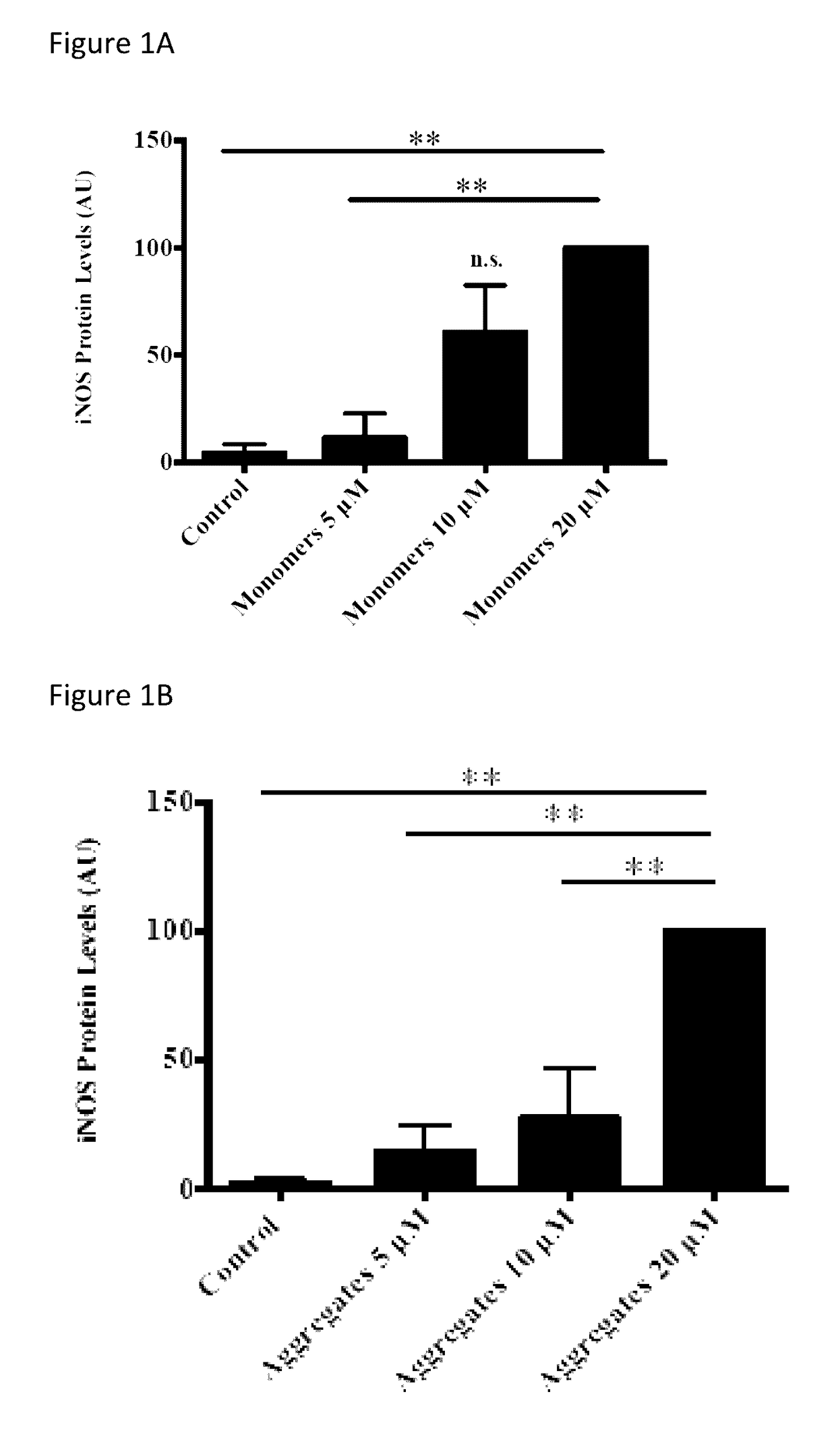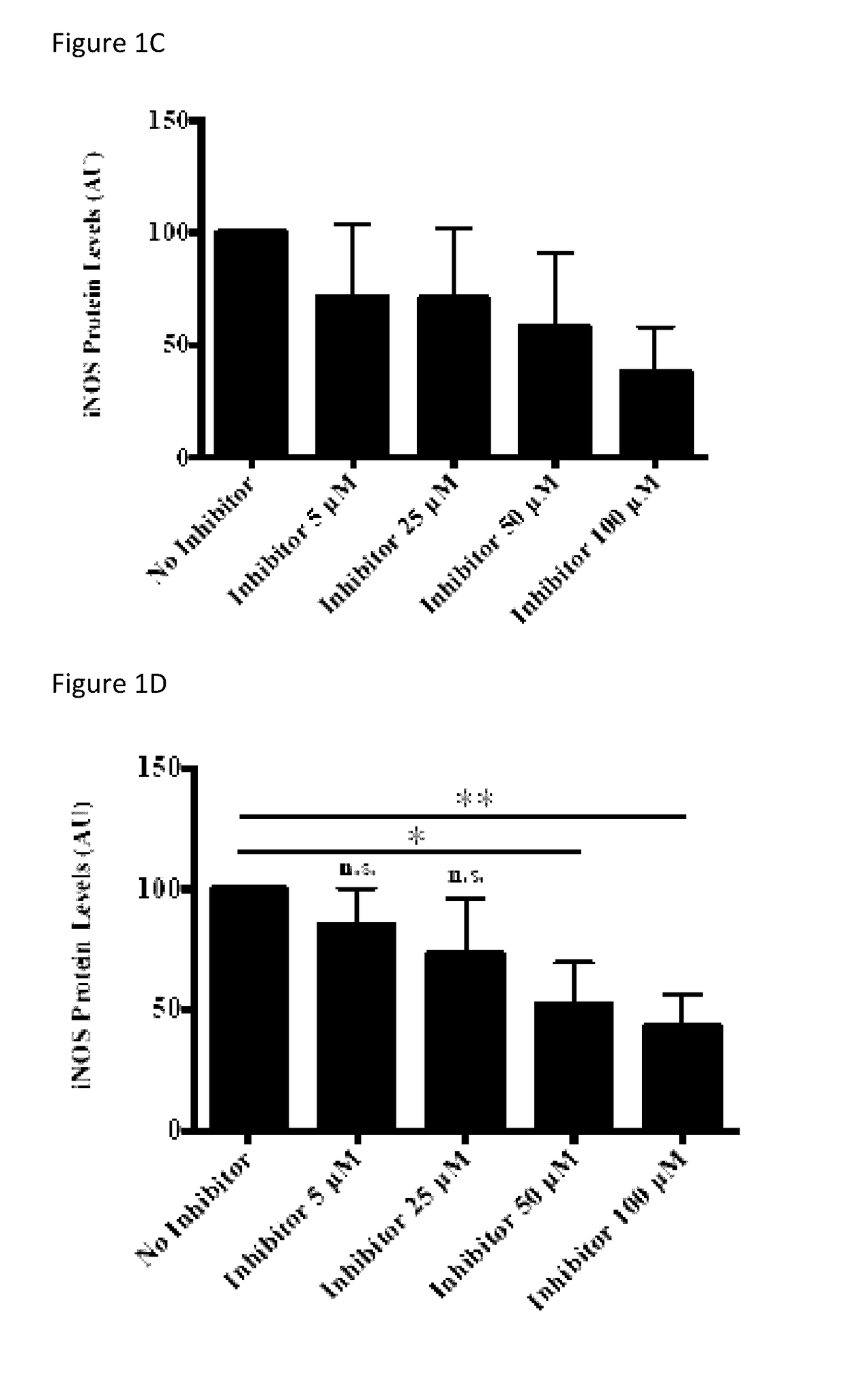Galactoside inhibitors for new uses
a technology of galactoside inhibitors and inhibitors, which is applied in the direction of cardiovascular disorders, organic active ingredients, pharmaceutical delivery mechanisms, etc., can solve the problems of rate limiting of galectin-3, and achieve the effects of reducing galectin-3 levels, reducing inflammatory responses, and limiting inflammatory responses
- Summary
- Abstract
- Description
- Claims
- Application Information
AI Technical Summary
Benefits of technology
Problems solved by technology
Method used
Image
Examples
example 1
Materials and Instruments for Synthesis of bis-{-deoxy-3-[4-(3-fluorophenyl)-1H-1,2,3-triazol-1-yl]-β-D-galactopyranosyl} sulfane
[0308]Bis-{3-deoxy-3-[4-(3-fluorophenyl)-1H-1,2,3-triazo1-1-yl]-β-D-galactopyranosyl} sulfane (TD139) was provided by Profs. Hakon Leffler and Ulf Nilsson (Lund University), and was prepared using the materials and methods described herein.
[0309]Melting points were recorded on a Kofler apparatus (Reichert) and are uncorrected. Proton nuclear magnetic resonance (1H) spectra were recorded using a Bruker DRX 400 (400 MHz) or a Bruker ARX 300 (300 MHz) spectrometer; multiplicities are quoted as singlet (s), doublet (d), doublet of doublets (dd), triplet (t), apparent triplet (at) or apparent triplet of doublets (atd). Carbon nuclear magnetic resonance (13C) spectra were recorded using a Bruker DRX 400 (100.6 MHz) spectrometer. Spectra were assigned using COSY, HMQC and DEPT experiments. All chemical shifts are quoted on the d-scale in parts per million (ppm).
[...
example 2
Synthesis of Phenyl 2-O-acetyl-4,6-O-benzylidene-1-thio-3-O-trifluoromethanesulfonyl-β-D-galactopyranoside (Structure 2 in Scheme 1)
[0313]Compound 1 (10.5 grams, 29.2 mmol) was dissolved in dried pyridine (4.73 mL, 58 4 mmol) and dried CH2Cl2 (132 mL). The reaction mixture was cooled, with stirring, to −20° C. (ice and NaCl bath 3:1). Slowly and under N2 atmosphere, Tf2O (5.68 mL, 33.6 mmol) was added. The reaction mixture was monitored by TLC (heptane:EtOAc, 1:1 and toluene:acetone, 10:1). When the reaction was complete, AcCl (2.29 mL, 32.1 mmol) was added and stirring was maintained, and the temperature was increased to room temperature. This mixture was monitored by TLC (heptane:EtOAc, 1:1 and toluene:acetone, 10:1). When the reaction was complete, it was quenched with CH2Cl2 and washed with 5% HCl, NaHCO3 (saturated) and NaCl (saturated). The organic layer was dried over MgSO4, filtered and concentrated under reduced pressure.
example 3
Synthesis of phenyl 2-O-acetyl-4,6-O-benzyliden-1-thio-β-D-gulopyranoside (Structure 3 in Scheme 1)
[0314]Tetrabutylammonium nitrite (25.3 g, 87.7 mmol) was added to a solution of compound 2 (15.6 g, 29.2 mmol) in DMF (110 mL) and was kept stirring, under N2 atmosphere, at 50° C. The reaction was observed initially to have a purple color which later was observed to be garnet colored. The reaction was monitored by TLC (heptane:EtOAc, 1:1 and toluene:acetone, 10:1) and quenched with CH2Cl2. The mixture was washed with 5% HCl, NaHCO3 (saturated) and NaCl (saturated). The organic layer was dried with MgSO4, and was filtered and concentrated under reduced pressure followed by purification by flash chromatography (eluent heptane:EtOAc, 1:1 and heptane:EtOAc, 1:2) and recrystallized from a mixture of EtOAc and heptane (1:3). 1H NMR in CDCl3 δ 7.60-7.57 (m, 2H, Ar), 7.43-7.40 (m, 2H, Ar), 7.37-7.34 (m, 3H, Ar), 7.29-7.25 (m, 3H, Ar), 5.50 (s, 1H, PhCH), 5.15 (d, 1H, J=10.29 Hz, H-1), 5.10 (d...
PUM
 Login to View More
Login to View More Abstract
Description
Claims
Application Information
 Login to View More
Login to View More - R&D
- Intellectual Property
- Life Sciences
- Materials
- Tech Scout
- Unparalleled Data Quality
- Higher Quality Content
- 60% Fewer Hallucinations
Browse by: Latest US Patents, China's latest patents, Technical Efficacy Thesaurus, Application Domain, Technology Topic, Popular Technical Reports.
© 2025 PatSnap. All rights reserved.Legal|Privacy policy|Modern Slavery Act Transparency Statement|Sitemap|About US| Contact US: help@patsnap.com



